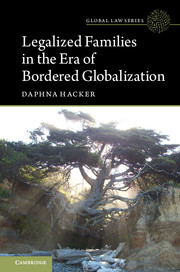Book contents
- Legalized Families in the Era of Bordered Globalization
- Global Law Series
- Legalized Families in the Era of Bordered Globalization
- Copyright page
- Dedication
- Contents
- Acknowledgments
- Introduction
- 1 Our Era
- 2 Legalized Families
- 3 Coordinating Familial Expectations
- 4 Transnational Reproduction Services
- 5 Familial Citizenship
- 6 Feeding Children
- 7 Familial Violence
- 8 Old Age
- Conclusion
- Bibliography
- Name Index
- Subject Index
- References
Bibliography
Published online by Cambridge University Press: 30 August 2017
- Legalized Families in the Era of Bordered Globalization
- Global Law Series
- Legalized Families in the Era of Bordered Globalization
- Copyright page
- Dedication
- Contents
- Acknowledgments
- Introduction
- 1 Our Era
- 2 Legalized Families
- 3 Coordinating Familial Expectations
- 4 Transnational Reproduction Services
- 5 Familial Citizenship
- 6 Feeding Children
- 7 Familial Violence
- 8 Old Age
- Conclusion
- Bibliography
- Name Index
- Subject Index
- References
- Type
- Chapter
- Information
- Legalized Families in the Era of Bordered Globalization , pp. 323 - 360Publisher: Cambridge University PressPrint publication year: 2017

